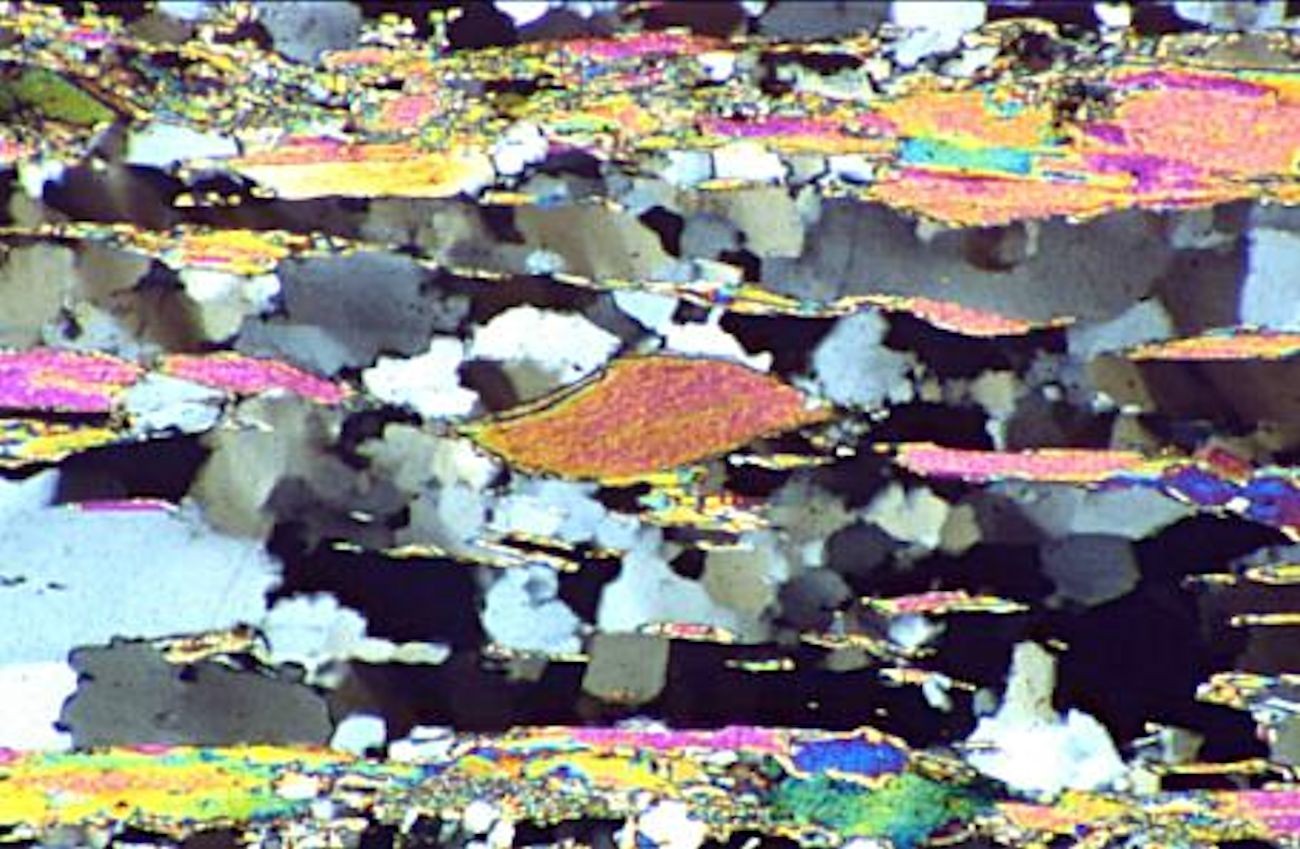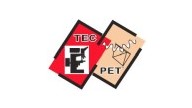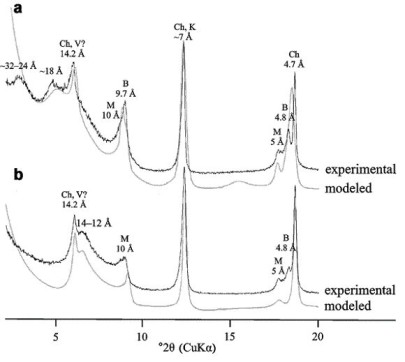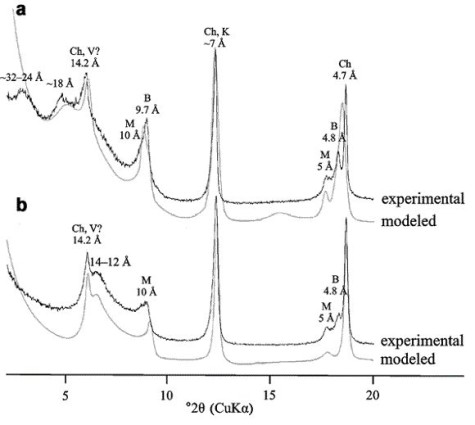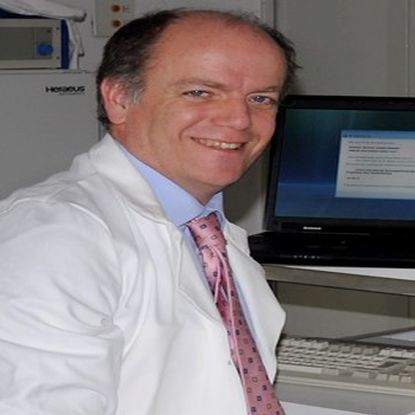The main research interests of the Technical Petrology Group are focussed on the following topics:
We are full of energy for petrology!
- The application of Kübler Index and other clay mineral parameters to determine a grade of diagenesis and incipient metamorphism.
- Development of Geothermobarometers based on the reaction kinetics in the reaction progress and aggradation of clay minerals to micas. These can be used in orogenic researches, sediment basin analyses, hydrocarbon exploration, and geothermic prospections.
- Improvement of methods related to hydrocarbon exploration.
- Improvement of methods related to the low-grade metamorphism characterisation.
Natural bentonite is considered as a suitable candidate for buffer material required for the underground disposal of high level radioactive waste (HLW). Repositories of HLW are commonly representing multibarrier systems. The host rock is an important barrier and so is clay used as backfill and buffer, that is the interface between the canister with the radioactive waste and the host rock. Backfill material is considered as a safety barrier in the emplacement tunnel. There are a number of concepts for the future disposal of HLW in underground repositories. They are based on the use of “multi-barrier” systems made up of two basic factors: an engineered barrier and host rock. The engineered barrier comprises metallic container (“canister”) containing vitrified nuclear waste or spent nuclera fuel. The metallic containers could be made of iron or copper. These are placed in underground caverns within host rock (e.g. shale, granite or salt), which constitutes the natural geological barrier. Our research focuses on concepts of different countries of using iron metallic castor and salt, crytallized rock or claystone rocks formations as host rock and bentonite acts as buffer and backfill materials . The main question for this type of scenario is, will bentonite be stable or not? In order to examine this question as well as to evaluate the long term safety of the repository, it is necessary to consider the stability of the buffer and backfill components by laboratory testing and theoretical modelling. Different smectitic rich clay and bentonite in the worlds are examined with the aims are followed:
- Stability of chemical structure and geotechnical paramters of smectite rich clays/bentonite in contact with groundwater, cement and Fe leachate from concrete and Fe-canister of multi barrier systems.
- Kinetics dissolution of smectite rich clays/bentonites under HLW-repository conditions.
- Natural Fe-rich clays as potential natural analouges to buffer alteration processes, driven by the presence of Fe and high alkaline groundwater in system.
Orogen and palaeogeothermal researches in foreland basins of the Alps, Vosges, Dinarides, Carpathians, Stara Planina (Bulgaria), Balkanides, Variscides of the Bosporus and Turkey.
A broad analytical spectrum must be applied in low-temperature petrology due to very
small grain-size. Technical Petrology group maintains a Microscopy Laboratory (CCA coalreflection microscopy, MPV coal-reflection microscopy, fluorescence microscopy,
transmitted light microscopy). The former XRD laboratories (Clay and XRD Laboratory and a research XRD Laboratory) had to be moved and merged with the awkward geochemical laboratory. The ICP-AES, TOC, AOX and gas chromatography together with the Organic Geochemical Laboratory was closed in 2012. A non-completed refurbishment of the Geoscience Institute forced us to accept an adverse decision. A XRF laboratory (Wave-dispersive BRUKER S8-Tiger) is maintained together with the groups of Chemical Analytics and Environmental Mineralogy.
Due to the adjournment of the refurbishment of the building and the infrastructure the situation did not change since 2012. On photographs of the laboratories the iniquitous situation depended on development is documented on the Web page to testify the need to get back ideal working conditions. In 2014 the negative development in rejected funding continued. The economic situation declined again and evaluation criteria of the faculty forced the need to cut an assistant position and thus some parts of the infrastructure of the technical petrology group had to be closed (Experimental Coal Petrology, Coal Petrology, Archaeometry and part of the instrumental analytics). The rebuke against the head is a concealed and perfidious way to erode scientific licence and freedom of research causing damage on the ambitious content in education of the specialism. It is to point out that the coal petrology research associate (position being cut in 2013 due to employment rules for research associates – 12 years of temporary engagement) Dr. Ronan Le Bayon and the head were honoured by The Society of Organic Petrology (TSOP) with five reference papers on the society homepage, also the appointment as convenors of a coal petrologic session on the GeoFrankfurt 2014 and as guest editors. A strong misfit between the evaluation at the university and the reputation in the coal community is evident. The reduction of the wide research base in Germany will cause future damages in sciences.
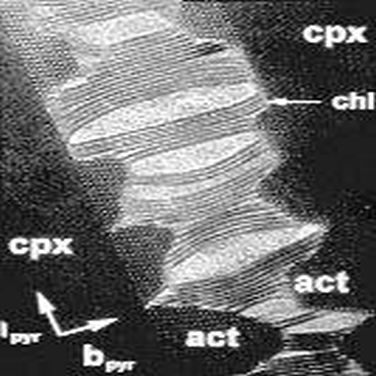
Transmission electron microscopy of actinolite (act) and chlorite (chl) in a clino-pyroxene (cpx) fissure
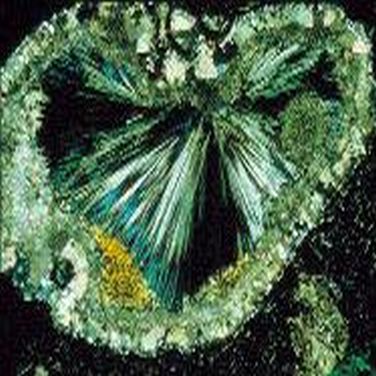
Amygdule in a basalt filled with different minerals precipitated from a post-volcanic fluid, scale = 2x4 cm
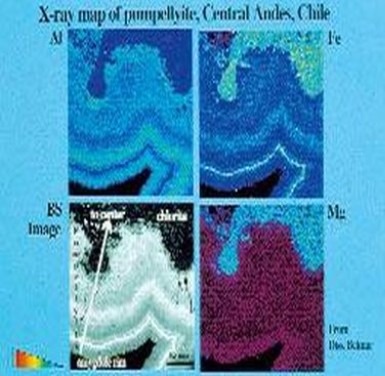
Chemical mapping in pumpellyite, scale = 2.5x2.5 mm, the analytic scale is in the order of few microns

